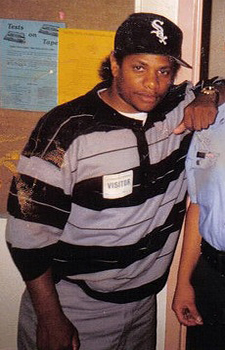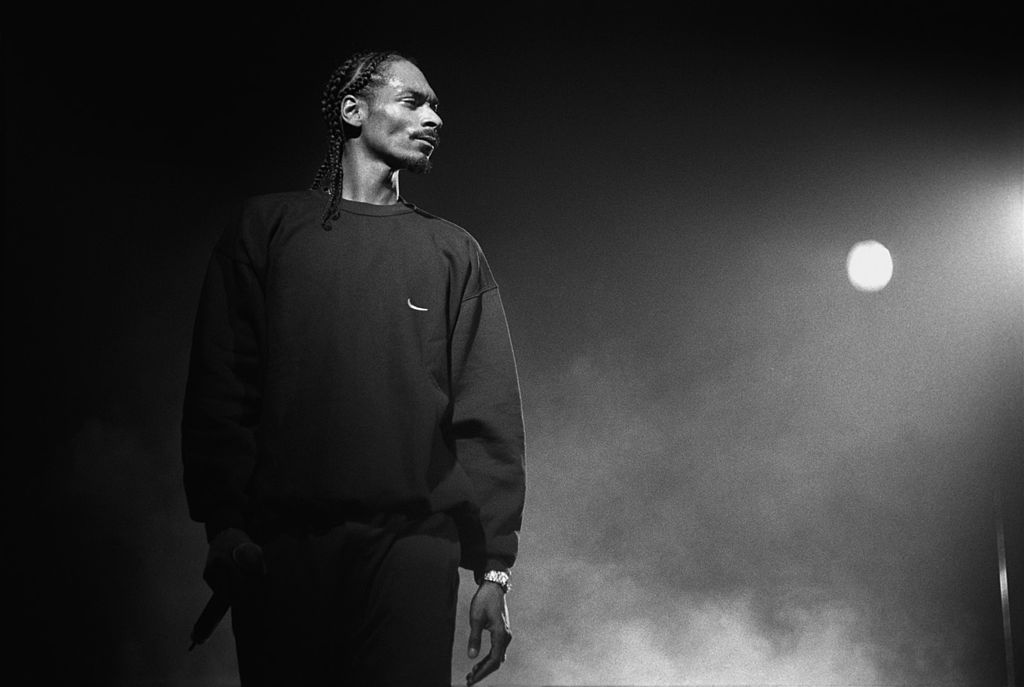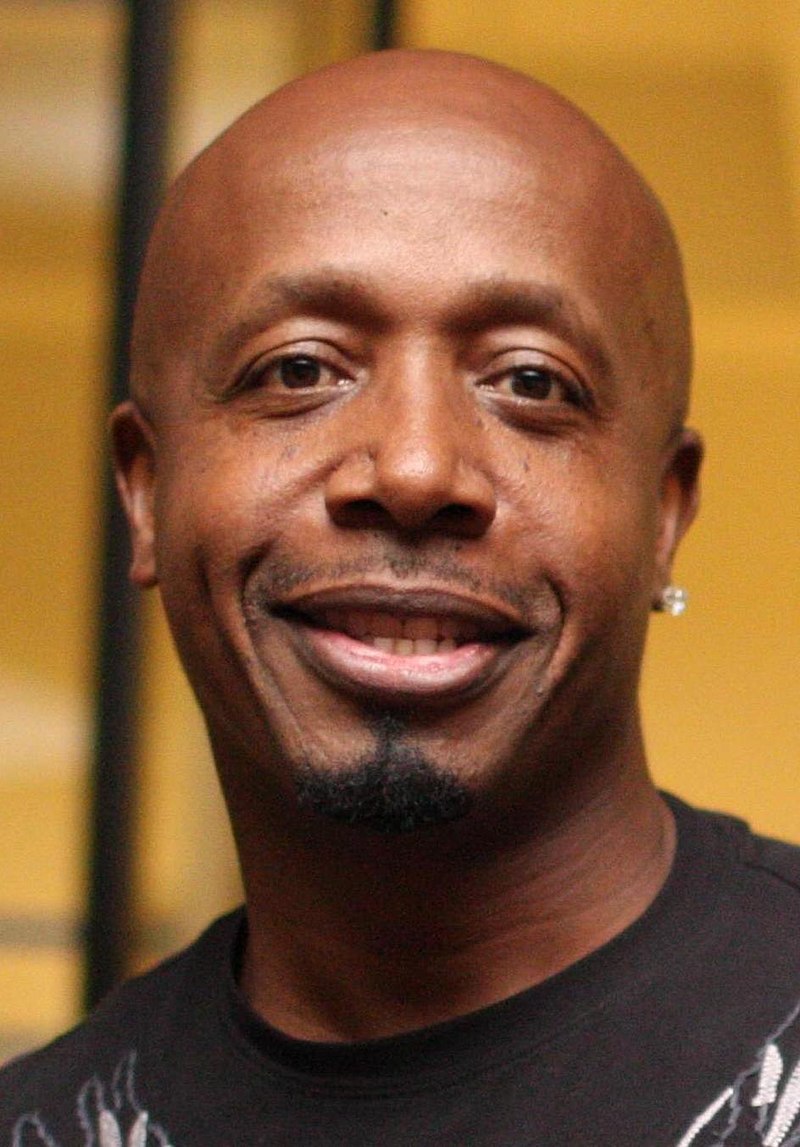
Gangsta Rap (Continued)
Eric "Eazy-E" Wright, a former drug dealer, augmented the roster of gangsta rap from Los Angeles. In 1987, he founded his label Ruthless Records and formed the group Niggas With Attitude or N.W.A. The group included MC Ren, DJ Yella, lyricist Ice Cube, and Dr. Dre, who became a renowned hip-hop producer. N.W.A.'s controversial lyrics addressed issues such as police brutality to Black and brown (Latino) men and aspects of ghetto life of Compton, a Los Angeles suburb, including drug dealing and "gangbanging." One of the group's most controversial songs, " Fuck tha Police " from their debut LP Straight Out of Compton (1988), generated much controversy and was suspected by the Federal Bureau Investigation's (FBI) Counterintelligence Program (COINTEL-PRO) of concealing cryptic messages propagating hate against the government (see Kelley 1996, 117-58).
The commercial success of N.W.A. encouraged a wave of gangsta rap artists, including Above the Law, Ice Cube and his affiliate groups, Da Lench Mob and West Side Connection, featuring Mac 10, as well as artists on the Death Row label, founded by Suge Knight and Dr. Dre, such as Snoop Dogg, formerly known as Snoop Doggy Dogg, Tha Dogg Pound featuring Kurupt and Dazz, and Tupac (2Pac) Shakur.
In the early 1990s, Death Row Records was highly successful with releases such as The Chronic (1992) by Dr. Dre, Doggystyle (1993) by Snoop Dogg, and All Eyez On Me (1996) by 2Pac. Latino gangsta acts also increased, including Mellow Man Ace and the collective Cypress Hill. In addition, some female artists were mentored by gangsta or reality MCs like Ice Cube and Eazy-E, among them Yo-Yo, J.J. Fad, and Michel'le.
The West Coast rap style was not confined to gangsta rap. Other alternatives were the gravelly voice of Tone-Löc with his party-oriented bestselling single hit " Wild Thing " (1988), and The Young MC, the songwriter for " Wild Thing ," who followed up with his own solo hit, " Bust A Move" (1989).
Beyond Los Angeles, other areas were also productive. In Oakland, for example, while Too $hort rapped about the ghetto lore of his neighborhood or "hood," MC Hammer was developing a dance-rap style that shied away from the hardcore realities of ghetto life, as in his song " Let's Get It Started " (1988). However, it wasn't until 1990 that MC Hammer became a household name with his song " U Can't Touch This (1990)."
Among other Bay Area artists were more underground acts who had not attained a mainstream reputation. These included Blackalicious, The Coup, E-40, Hieroglyphics, The Luniz, Paris, Planet Asia, Spearhead, Spice 1, and Digital Underground. To the Northwest, in Seattle, Sir-Mix-A-Lot scored several platinum hits, from " Square Dance Rap " (1985) to the techno-funk mix " Baby Got Back" from Mack Daddy (1992) released on his label Rhyme Cartel.








